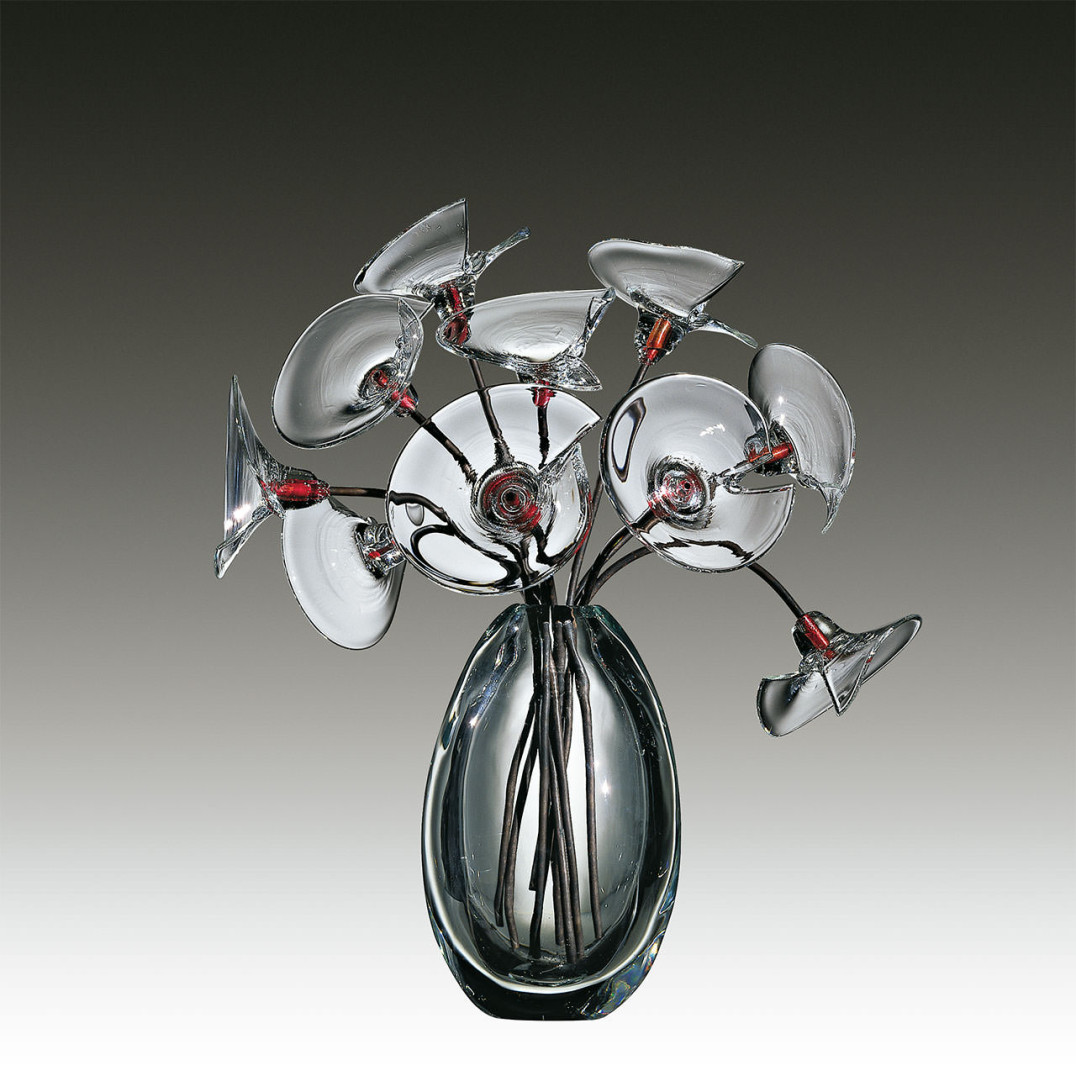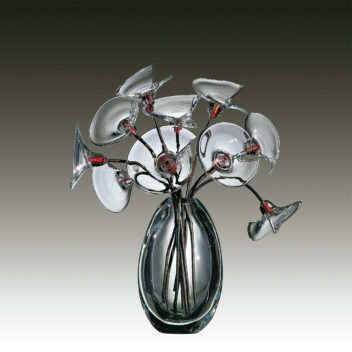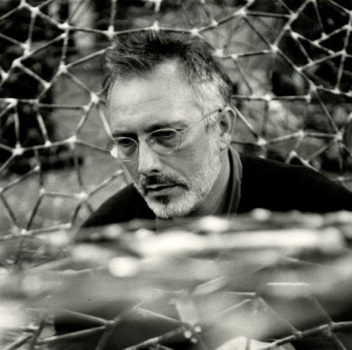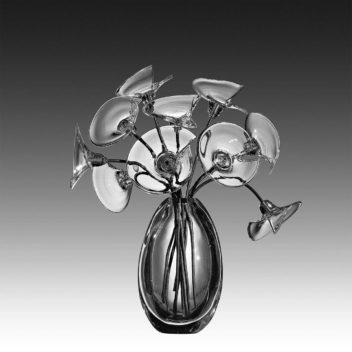
Giorgio VignaFuochi d'acqua, 2000

Giorgio VignaFuochi d'acquaVenini S.p.A., 2000
Vase and flowers composed of thick cristallo glass. Stems are made of hollow copper pipes. The red center of the flowers is obtained by the oxidation of the metal when the hot glass is applied.
Engraved: Giorgio Vigna 2002.
28 in. high (71.1 cm)
Bibliography and comparative texts:
R. Linzeler, 1922, p. 666;
C. Carrà , 1923, p. 67;
R. Linzeler, 1923, p. 83;
R. Papini, 1930, n. 570;
G. Mariacher, 1967, p. 98;
R. Barovier Mentasti, 1982, n. 252;
Mille anni…, 1982, n. 503;
F. Deboni, 1984, p. n. 70;
W. Neuwirth, 1987, nn. 7, 104;
A. Dorigato, 1986,
p. 71;
F. Deboni, 1989, n. 1;
L’arte del vetro, 1982, n. 307;
M. Heiremans, 1993, n. 191;
M. Barovier, R. Barovier Mentasti,
A. Dorigato, 1995, n. 15;
A. Venini Diaz de Santillana, 1996, n. 1;
R. Barovier Mentasti, 1998, n. 25;
A. Venini Diaz de Santillana, 2000, n. 1;
Olnick Spanu, 2000, n. 8;
Olnick Spanu, 2001, n. 13.

Giorgio Vigna 1955–
Giorgio Vigna was born in Verona in 1955. He received his artistic training between his hometown, Venice, Rome, and Milan, where he currently lives and works. An artist operating at the boundary between reality and imagination, Vigna explores the line between what is and what appears to be. His works, which span from sculpture to jewelry and from works on paper to site-specific installations, reflect the breadth and depth of his constant research. He uses materials like metal, glass, and paper, exploring with and within them in order to reveal hidden possibilities. The forms he creates express the essence of the elements with which he works: strong and natural, universal and timeless, and full of symbolic meanings. Vigna’s work is permanently exhibited in notable museums and private collections throughout the world, including The State Hermitage Museum, St. Petersburg; Museo di Castelvecchio, Verona; Design Museum, Helsinki; Cooper Hewitt, Smithsonian Design Museum, New York; MAD, Museum of Arts & Design, New York; IMA, Indianapolis Museum of Art, Indianapolis; Honolulu Museum Of Art, Honolulu; Museo degli Argenti, Palazzo Pitti, Florence; MIAAO, Museo Internazionale delle Arti Applicate Oggi, Turin; Civica Raccolta delle Stampe Achille Bertarelli, Castello Sforzesco, Milan; and Olnick Spanu Art Program, Garrison, New York. His most important solo exhibitions include Cosmographies, Galerie Naila de Monbrison, Paris (2015); Sospeso, Elisabetta Cipriani-Jewellery by Contemporary Artists, London (2014); Stati Naturali, Museo di Castelvecchio, Verona (2013; where he created, for the fountain of Carlo Scarpa, the permanent installation in glass, Acquaria); Altrove, Studio Stefania Miscetti, Rome (2011); Altre Nature, Museo Fortuny, Venice (2010); Giorgio Vigna Jewels, Design Museum, Helsinki (2007); Nature di vetro, for VENINI, Museo Correr, Venice (2002). Among his more recent group exhibitions are GLASS Arte del vetro oggi, Villa dei Vescovi - Luvigliano di Torreglia, Padova (2016); ATTRAvetro, Museo Archeologico, Castello Visconteo, Pavia (2015); Gifts from America: 1948-2013. Modern and contemporary applied arts from the Hermitage Museum Foundation (USA), The State Hermitage Museum, St. Petersburg (2014); TRAME, Triennale Design Museum, Milan (2014); Beyond Liaisons, World Jewellery Museum, Seoul (2013); Fragile, Musée Maillol, Paris (2013); Hanging Around: Neckpieces from MAD's Collection, Museum of Arts & Design, New York (2012); TRA. Edge of Becoming, Museo Fortuny, Venice (2011); and Buon Domani\A Better Tomorrow, Studio Stefania Miscetti, Rome (2010).

Venini S.p.A. 2001–
Since 2001 Venini S.p.A. is part of Italian Luxury Industries Group and is led by Giancarlo Chimento, Giuliano Tabacchi and Giorgio Rizzo.